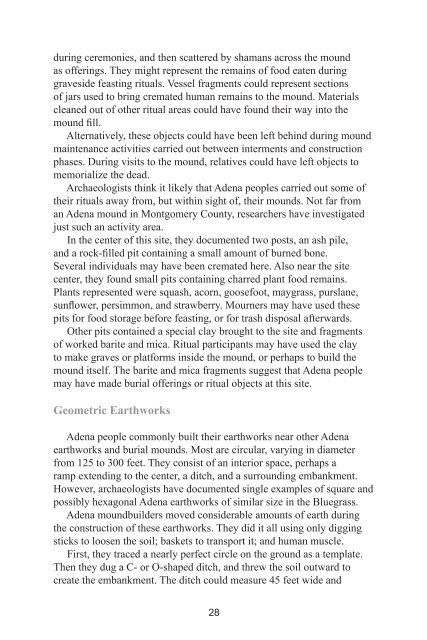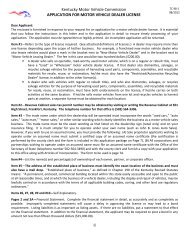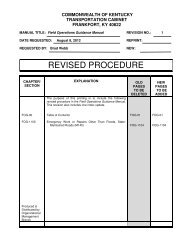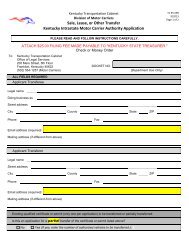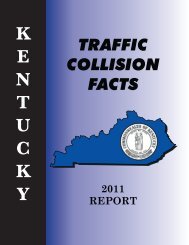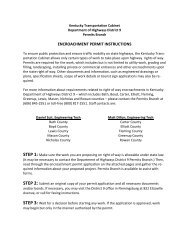woodland period moundbuilders of the bluegrass - Kentucky ...
woodland period moundbuilders of the bluegrass - Kentucky ...
woodland period moundbuilders of the bluegrass - Kentucky ...
- No tags were found...
You also want an ePaper? Increase the reach of your titles
YUMPU automatically turns print PDFs into web optimized ePapers that Google loves.
during ceremonies, and <strong>the</strong>n scattered by shamans across <strong>the</strong> moundas <strong>of</strong>ferings. They might represent <strong>the</strong> remains <strong>of</strong> food eaten duringgraveside feasting rituals. Vessel fragments could represent sections<strong>of</strong> jars used to bring cremated human remains to <strong>the</strong> mound. Materialscleaned out <strong>of</strong> o<strong>the</strong>r ritual areas could have found <strong>the</strong>ir way into <strong>the</strong>mound fill.Alternatively, <strong>the</strong>se objects could have been left behind during moundmaintenance activities carried out between interments and constructionphases. During visits to <strong>the</strong> mound, relatives could have left objects tomemorialize <strong>the</strong> dead.Archaeologists think it likely that Adena peoples carried out some <strong>of</strong><strong>the</strong>ir rituals away from, but within sight <strong>of</strong>, <strong>the</strong>ir mounds. Not far froman Adena mound in Montgomery County, researchers have investigatedjust such an activity area.In <strong>the</strong> center <strong>of</strong> this site, <strong>the</strong>y documented two posts, an ash pile,and a rock-filled pit containing a small amount <strong>of</strong> burned bone.Several individuals may have been cremated here. Also near <strong>the</strong> sitecenter, <strong>the</strong>y found small pits containing charred plant food remains.Plants represented were squash, acorn, goosefoot, maygrass, purslane,sunflower, persimmon, and strawberry. Mourners may have used <strong>the</strong>sepits for food storage before feasting, or for trash disposal afterwards.O<strong>the</strong>r pits contained a special clay brought to <strong>the</strong> site and fragments<strong>of</strong> worked barite and mica. Ritual participants may have used <strong>the</strong> clayto make graves or platforms inside <strong>the</strong> mound, or perhaps to build <strong>the</strong>mound itself. The barite and mica fragments suggest that Adena peoplemay have made burial <strong>of</strong>ferings or ritual objects at this site.Geometric EarthworksAdena people commonly built <strong>the</strong>ir earthworks near o<strong>the</strong>r Adenaearthworks and burial mounds. Most are circular, varying in diameterfrom 125 to 300 feet. They consist <strong>of</strong> an interior space, perhaps aramp extending to <strong>the</strong> center, a ditch, and a surrounding embankment.However, archaeologists have documented single examples <strong>of</strong> square andpossibly hexagonal Adena earthworks <strong>of</strong> similar size in <strong>the</strong> Bluegrass.Adena <strong>moundbuilders</strong> moved considerable amounts <strong>of</strong> earth during<strong>the</strong> construction <strong>of</strong> <strong>the</strong>se earthworks. They did it all using only diggingsticks to loosen <strong>the</strong> soil; baskets to transport it; and human muscle.First, <strong>the</strong>y traced a nearly perfect circle on <strong>the</strong> ground as a template.Then <strong>the</strong>y dug a C- or O-shaped ditch, and threw <strong>the</strong> soil outward tocreate <strong>the</strong> embankment. The ditch could measure 45 feet wide and28


